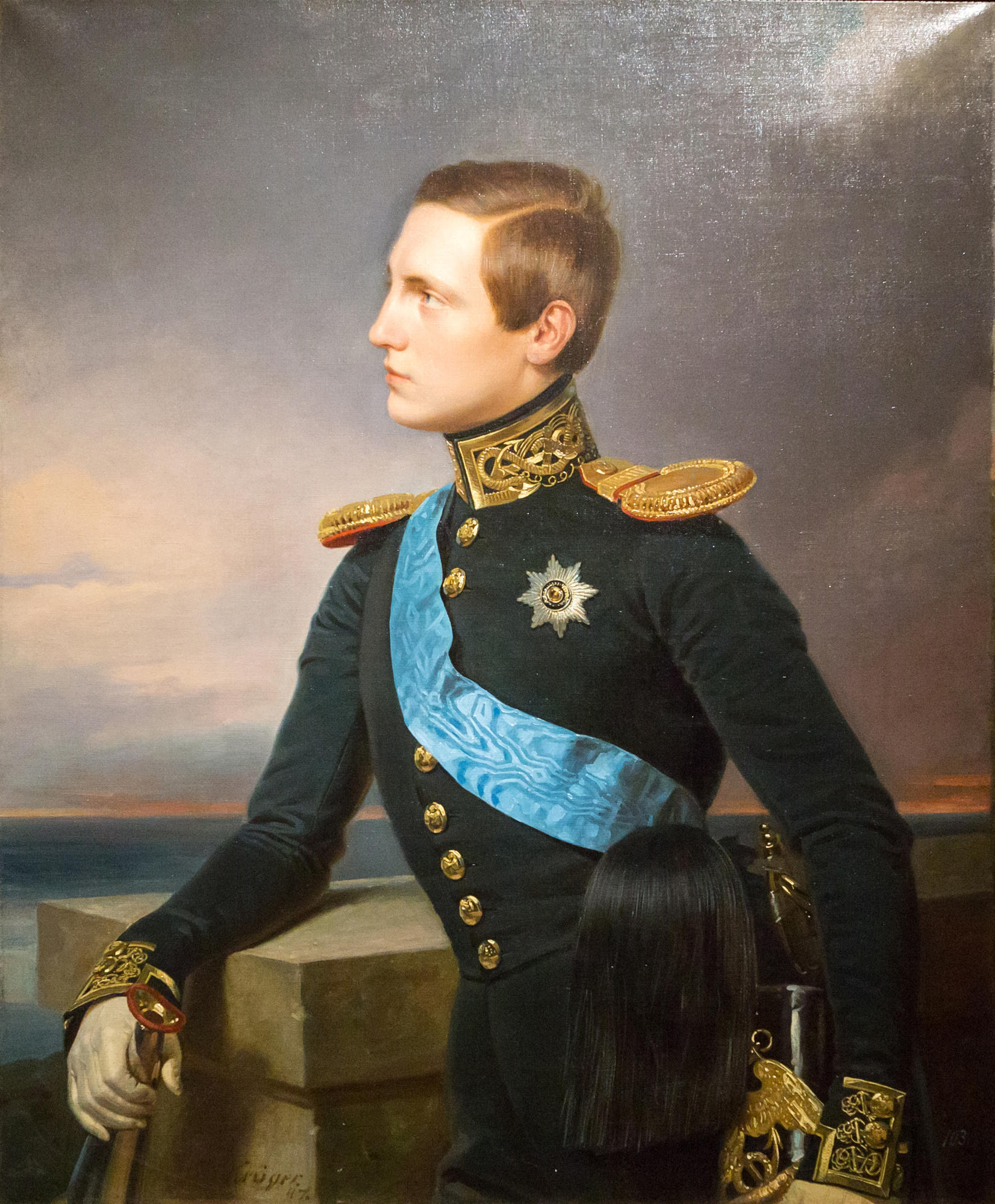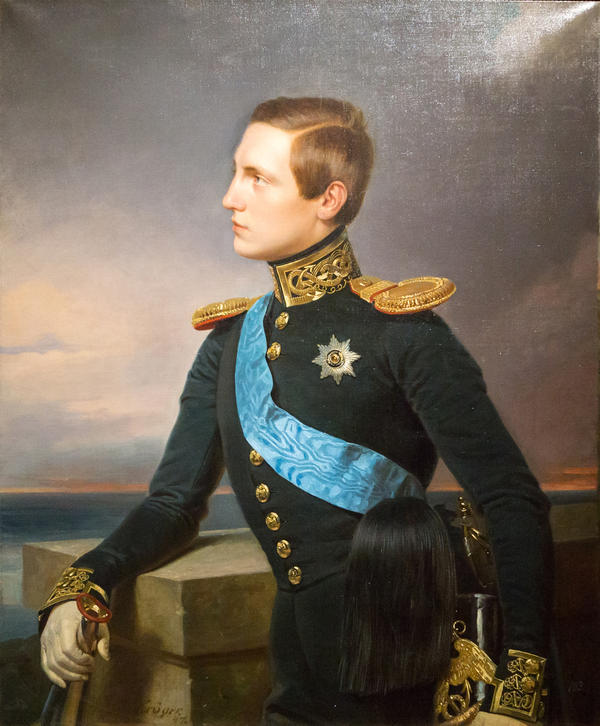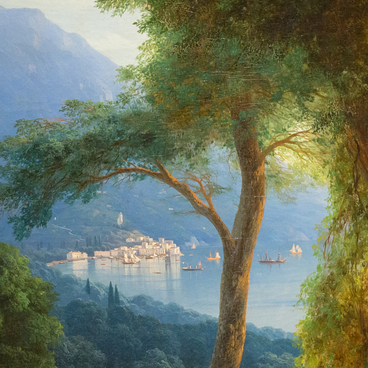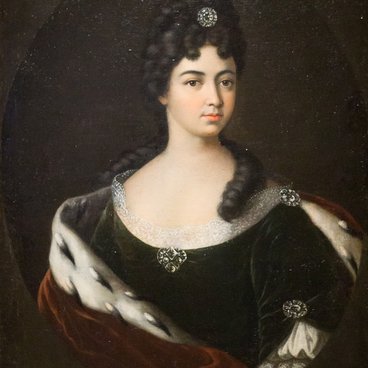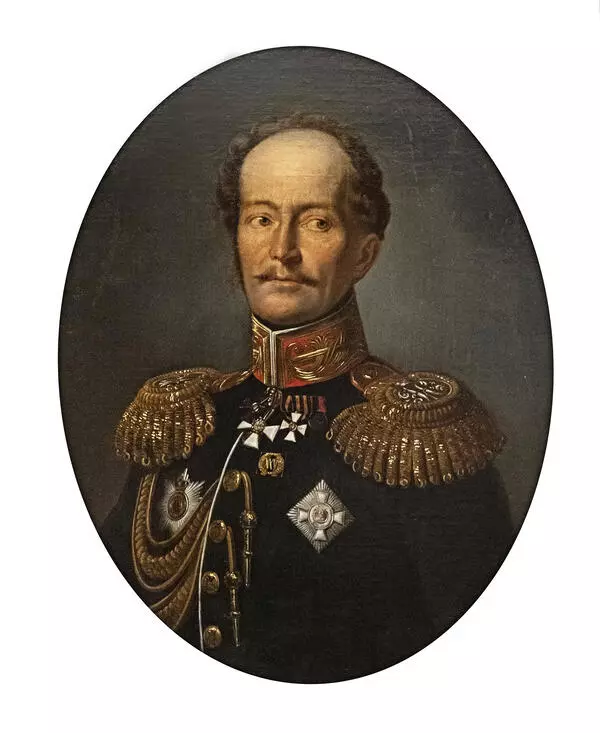Franz Krüger was the favourite artist of Russian Emperor Nicholas I. The tsar commissioned to the German painter a portrait of his second son Konstantin Nikolayevich. The master depicted the Grand Prince at the age of 20. Krüger painted in the realistic manner and carefully rendered every detail. He achieved a nearly photographic resemblance of the image to the model. The Grand Prince stands with his arm resting on the embankment parapet in St. Petersburg. He is depicted in profile wearing the uniform jacket of a general admiral of infantry artillery.
Portrait of Grand Prince Konstantin
Время создания
1847
Размер
104x86 cm
Техника
Oil on canvas
Коллекция
10
Открыть в приложении#1
Franz Krüger
Portrait of Grand Prince Konstantin
#2
#4
Tsar Nicholas I prepared his second son for the navy service from his childhood. The Grand Prince embarked on a sea voyage for the first time when he was eight. In 1855, Konstantin Nikolayevich became Head of the Department of the Imperial Navy. He participated in developing the reforms of his brother Alexander II and did a lot to improve the Russia fleet.
#5
In the portrait, Franz Krüger was especially particular about the details of the Grand Prince’s jacket. Under Nikolas I, the naval officer’s uniform jacket became single-breasted. It buttoned with ten golden buttons that had an engraved spread eagle on them, the coat of arms of the Russian Empire. The jacket had a high stand-up collar decorated with golden braiding.
All these details are carefully rendered in the picture. A silver star, the Order of St. Andrew the Apostle the First-Called, is also there. It was the highest mark of distinction in the Russian Empire. It was issued with a broad blue ribbon. The eight-pointed star was worn on the left side of the breast above all other awards.
#6
In his left hand Konstantin Nikolayevich is holding a shako (kiver). It is a military headgear with a visor and a flat top. It is adorned with a plume with a black hackle and a gilded figure of an eagle. The plume is a decoration in the form of a vertical bunch of horsehair. From 1844, it was used to decorate kivers of generals and admirals.
#8
Franz Krüger was born at the end of the 18th century to a family of a modest government servant. In his childhood, the future court painter helped his family by making sketches of birds for a local ornithologist who used them to illustrate his research papers. Later, he was enrolled in the school of the Academy of Arts in Berlin, but the beginning artist was expelled from it for disobedience. Franz Krüger loved animals and spent all his time in stables where he sketched horses.
In 1818, he showed his works to the general public for the first time. It happened at an exhibition organised by the Berlin Academy of Arts where he exhibited drawings of animals, battle and hunt scenes. His works were appreciated by the Prussian Imperial House and the royalty commissioned a few portraits to him.
#9
In 1825, Emperor Frederick III made the autodidact his court artist and granted him the title of a Royal Professor. In 1831, his painting ‘Parade on the Opera Square in Berlin’ was bought by Nicholas I. Franz Krüger used the money to go to Russia. In St. Petersburg he painted the portraits of the Emperor and his family.
#10
New Jerusalem Museum
читать дальшескрыть
00:00
00:00
1x
Portrait of Grand Prince Konstantin
Время создания
1847
Размер
104x86 cm
Техника
Oil on canvas
Коллекция
10
Открыть в приложении
Поделиться
